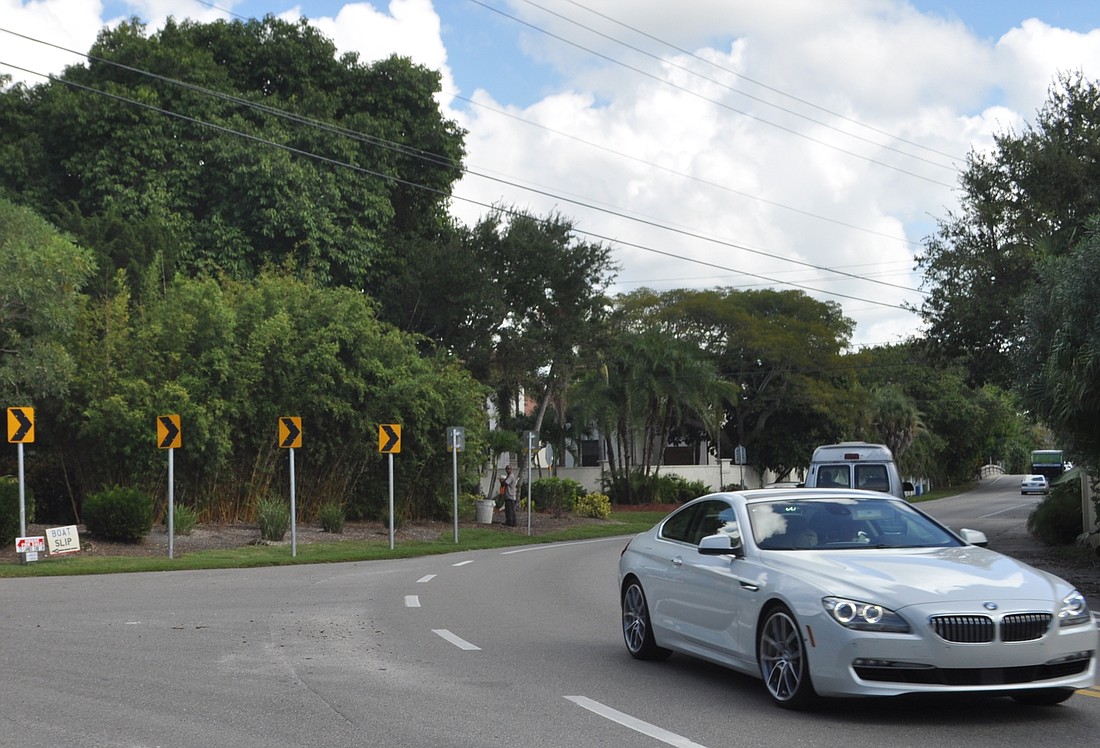- November 24, 2024
-
-
Loading

Loading

When Carolyn Allgeier bought a home on Siesta Drive in the Bay Island neighborhood last March, she noticed one small problem: traffic made it hard to get out of her driveway and onto the road.
If she had brought her dogs with her, she might have realized the problem was bigger than that. After moving in full time two months ago — and starting to regularly walk her two Brittany spaniels — Allgeier discovered the challenges associated with getting around her neighborhood.
There’s no sidewalk on her side of the street. There are no crosswalks to get to the sidewalk on the other side. Cars driving down Siesta Drive often exceed the 40 mph speed limit.
“When we come out of our house, we take our lives into our hands getting across Siesta Drive,” Allgeier said. “Bay Island is comprised of sweet little streets and a superhighway.”
On April 3, a fatal crash at Siesta Drive and Higel Avenue became the most recent example of the danger associated with this area of north Siesta Key. Although authorities believe alcohol was a factor, it was the 24th crash at that intersection since 2012, according to the Sarasota Police Department.
Allgeier may be new to the area, but her neighbors say the problems aren’t. Earlier this month, the Bay Island Siesta Association held a meeting to discuss traffic-related issues. Those in attendance said they’ve made concerns known to local officials, but they haven’t seen any changes.
Anne Westman, co-chairwoman of the neighborhood association’s Traffic Calming and Awareness Committee, hopes to change that. The meeting was designed to follow up on the city’s instructions for how to get some traffic improvements in the area.
Westman said the city asked for evidence that residents on problematic streets want the city to look into the issue. If 60% of residents ask for it, the city will undertake a traffic-calming study. In addition to gathering signatures, Westman is spearheading an awareness campaign to make sure people in the neighborhood are driving safely.
“We’re here to focus more on what we can control,” Westman said. “Most of us try to follow the rules and obey the speed limit. It’s just a good reminder to keep doing it.”
The city could undertake a traffic-calming study for the streets it manages, which includes smaller residential streets such as Freeling Drive, but not Siesta Drive. That street is a state highway — the Florida Department of Transportation oversees it — making it more challenging to get officials to change the road, residents said.
That doesn’t mean they’re giving up hope on making improvements. Allgeier and other residents rattled off a list of potential changes they might like to see along Siesta Drive: a lower speed limit, a sidewalk on the north side of the street, a series of crosswalks, a barricade. Those ideas have been floated in the past, too, and haven’t turned into tangible results, they said.
Allgeier volunteered to serve as the point person for campaigning for change on Siesta Drive. She’s not entirely sure where to start, but she’s optimistic a unified push will eventually yield results.
“I’m sure the city of Sarasota doesn’t want this to keep happening,” she said. “It’s just a question of organizing the neighborhood so we have the strength of all of these people, going to the city, and saying, ‘Listen: We need to make some changes.’”
One of the ideas the group discussed was more straightforward: What if a police officer were stationed at the intersection to crack down on speeders?
Residents pointed to Longboat Key as an example. Gulf of Mexico Drive is another open two-lane road with a speed limit as high as 45 mph. But there, the same speeding issues don’t exist, because motorists know law enforcement is vigilant about pulling people over, they say.
Bruce King, a sergeant with the Sarasota Police Department’s traffic unit, said anyone in the city could call in and put in a patrol request, and officers will be made aware of the issue at hand. He said specificity is key — telling an officer about a vague problem in a broad area is less helpful than giving an exact time and place where a problem is happening.
In this respect, King said, strengthening enforcement on Siesta could prove challenging.
“Having worked many of the accidents there, there’s not going to be a timeframe where it’s an overwhelming problem,” King said. “A lot of the crashes have been DUI-related or late-night related. We can’t just dedicate an officer to sit there for an entire shift.”
Residents said the problems go beyond crashes. They intend to reach out to the police with specifics about when speeding is most prevalent, particularly late at night on weekends.
Early in the process, it’s unclear whether residents can successfully lobby for more substantive changes along the road. Still, those changes are at the heart of what Allgeier ultimately wants to take place on Siesta Drive.
She comes back to the crosswalks. Adding four or five places where people can walk out of their houses and to the sidewalk would prevent the 15-minute waits to get across the street. It would eliminate the urge to dart across when there’s the smallest opening in traffic.
Allgeier thinks it all makes too much sense for it not to eventually get done.
“I keep thinking that we have a good chance at this, because we’re not asking for anything outrageous,” Allgeier said.